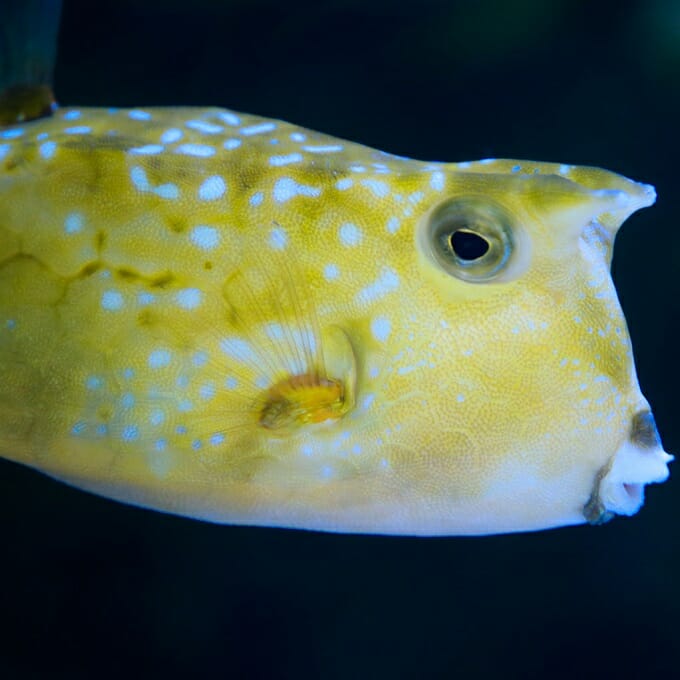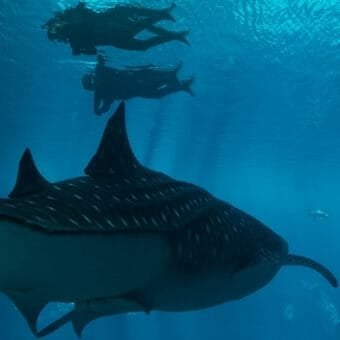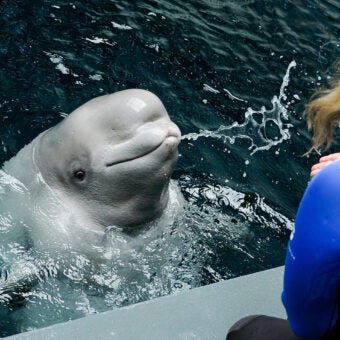-
Size
Up to 18 inches (46 cm) -
Diet
Bottom layer algae, various microorganisms and marine protozoans -
Range
Indo-Pacific -
Habitat
Sand or rubble on the bottoms of coral reef lagoons
Physical Characteristics
- A type of boxfish, recognizable by its two pairs of long horns protruding from the front of the head, such as with a cow or bull, and also beneath the tail.
- Males and females display a yellow to olive base color decorated with white or bluish spots.
- Lacks an operculum, or gill cover, and has a small slit or hole instead.
- Can grow up to 18 inches (46 cm) in length.
Animal Fact
The cowfish’s flesh is poisonous.
Diet / Feeding
- Omnivorous and feeds on bottom layer algae, various microorganisms and marine protozoans.
- Blows jets of water into sandy substrate to feed on invertebrates.
Range / Habitat
- Occurs primarily in the Indo-Pacific region including subtropical waters of the Red Sea and East Africa through Indonesia, Japan and Korea, as well as Australia and Southern Africa.
- Found mainly in sand or rubble on the bottoms of coral reef lagoons, flats and protected areas from 3 feet (0.9 m) to 164 feet (50 m).
Reproduction & Growth
- Generally spawns in the evening at about sunset within a short 8-10 minute period.
- Females quickly swim up into the water column followed by a larger male who presses his snout against the female’s abdomen.
- Eggs and sperm are released into the surrounding water and are fertilized as the parents quickly return back down to the reef bottom.
- The female sheds all of her eggs during one trip.
- The male repeats this process with each member of the harem.
Conservation Status
- ”Not Evaluated” on the IUCN Red List.
Additional Information
- A reef fish, often solitary and territorial (but can be found in pairs while mating).
- Employs a unique method of swimming called ostraciiform locomotion – in which the caudal fin moves from side to side – that causes the longhorn cowfish to look as though it is hovering.
- With no pelvic skeleton, this species lacks pelvic fins.
- Also known as “long-horns,” “horned boxfish” and “trunkfish.”
- Horns as are thought to have evolved to make this cowfish hard for most predators to swallow.
- The flesh is poisonous.





